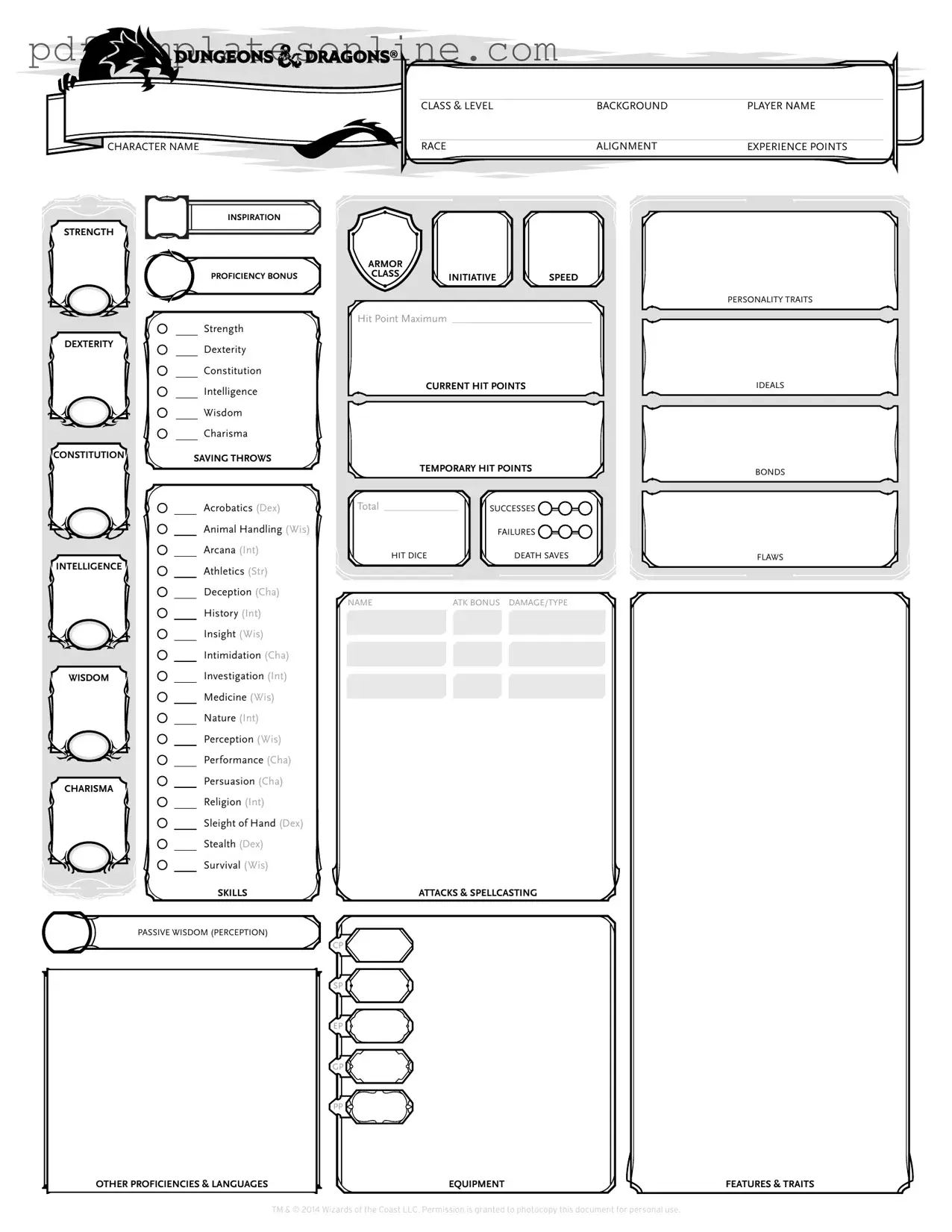Detailed Guide for Writing Dnd Character Sheet
Creating a Dungeons & Dragons character is an exciting journey that allows you to step into a world of imagination and adventure. As you fill out your character sheet, you'll define your character's abilities, background, and personality. Here’s how to get started with the D&D Character Sheet form.
- Begin by choosing a character name. This is the name your fellow players will know you by during your adventures.
- Select your race. Each race has unique traits that can influence your character's abilities and skills.
- Pick a class. Your class determines your character’s skills and how they interact with the world.
- Assign ability scores. These scores represent your character's strengths and weaknesses. Typically, you’ll have six scores to fill out: Strength, Dexterity, Constitution, Intelligence, Wisdom, and Charisma.
- Determine your character’s background. This will provide additional skills and traits that can enrich your character's story.
- Fill in your character’s alignment. This reflects their moral compass and ethical beliefs, guiding their decisions.
- Choose your character's skills and proficiencies. These will help define what your character is good at and how they will interact with challenges.
- Record your character’s equipment. This includes weapons, armor, and other items that your character will carry.
- Set your character’s hit points. This number represents how much damage your character can take before falling in battle.
- Finally, add any additional notes or features that are specific to your character. This could include spells, special abilities, or personal backstory elements.
Once you have completed these steps, your character sheet will be ready for action. You'll have a unique character to bring to life in your D&D adventures, ready to face challenges and explore new worlds!
